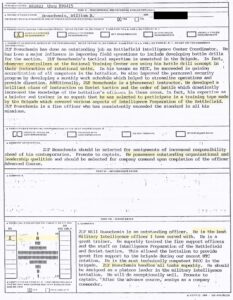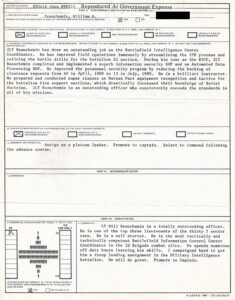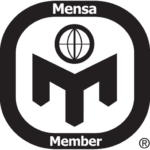
For my intelligence work in the US Army and in federal law enforcement, I was given several awards and exceptional performance reviews. I am very proud of my accomplishments that are behind each of these. Here are those awards and the story behind each.
Army Achievement Medal and one-block on Officer Evaluation Report
for INTELLIGENCE ANALYSIS
My assignment as the Battlefield Intelligence Center Coordinator for an artillery battalion of the 1st Infantry Division (Mechanized) --- the famous "Big Red One" --- was my first assignment after completing Military Intelligence School. I was fortunate to have joined the unit when it was starting to train for a month of carefully watched wargames in the Mojave Desert.
This preparation consisted of frequent wargame exercises over several months for a total of 15 battles. Before and during each battle I provided intelligence analysis and recommendations to my commander and his operations officer. After each battle, I greatly refined the analytical methods and decision-support tools I had recently been taught in school, discarding much of it and inventing a lot that was new.
Some of my innovations:
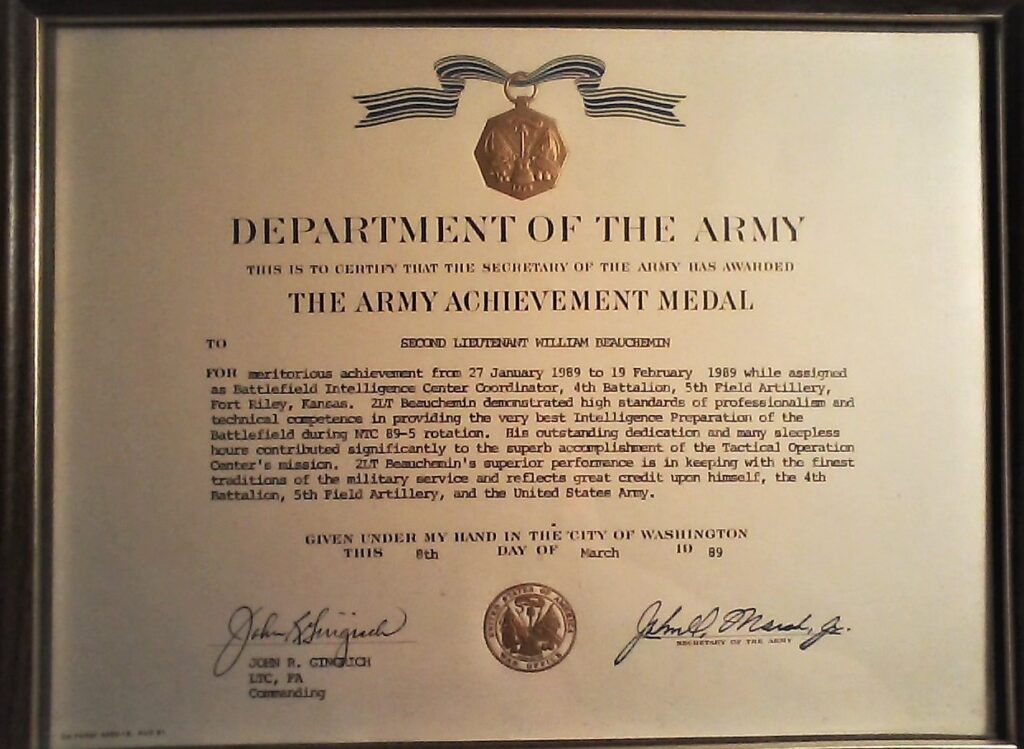
The citation reads: “For meritorious achievement from 27 January 1989 to 19 February 1989 while assigned as Battlefield Intelligence Center Coordinator, 4th Battalion, 5th Field Artillery, Fort Riley, Kansas. 2LT [Second Lieutenant] Beauchemin demonstrated high standards of professionalism and technical competence in providing the very best Intelligence Preparation of the Battlefield during NTC 89-5 rotation [i.e., a month of war games at the National Training Center (Mojave Desert), Fort Irwin, CA]. His outstanding dedication and many sleepless hours contributed significantly to the superb accomplishment of the Tactical Operation Center’s mission. 2LT Beauchemin’s superior performance is in keeping with the finest traditions of the military service and reflects great credit upon himself, the 4th Battalion, 5th Field Artillery, and the United States Army.”
Conducting a "hasty" analysis drill as soon as operational orders arrived. This gave the planning staff some basic intelligence with which to start planning operations. As my complete intelligence analysis progressed, I would periodically brief the planning team.
Creating decision lines from the enemy's perspective: what might they choose to do at this point and what would guide their decision?
New map graphics for depicting friendly and enemy troop movements (because the doctrinal method did not support the new analytical methods I developed).
When it came time for the month of wargames in the Mojave Desert (the National Training Center at Fort Irwin, CA), I was ready with my new and tested intelligence production system. My methods proved so successful that the on-site evaluator of my headquarters group recorded my methods so he and the other evaluators could teach them to other units in the future. This was noted in my first performance review (see below).
In my first performance review (the first after the Mojave Desert wargames), my battalion commander assessed me as being in the top 2% of the 30 lieutenants in his battalion. Three months later, he evaluated me in the top 1%. This is all the more remarkable because I belonged to the Military Intelligence Corps, a different organization than the Field Artillery unit in which I worked. In the business world, this would be the same as your company's CEO saying an outside consultant was one of the best people in the company.
Click the images below to see larger versions of these evaluation reports. The top-most paragraph was the evaluation of my immediate supervisor. The bottom paragraph and ranking was by the chief executive of the Field Artillery unit, the battalion commander (a lieutenant colonel).
Certificate of Appreciation, Drug Enforcement Administration
for DATABASE & APPLICATION CREATION and IDENTIFYING NEW INVESTIGATIVE RESOURCES
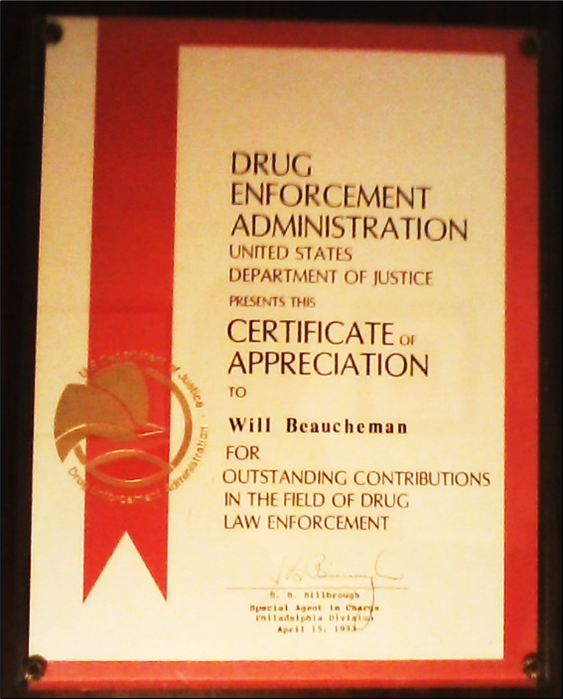
Certificate is signed by the Special Agent-in-Charge of the Philadelphia Field Division, S.B. Billbrough.
NOTE: My last name is misspelled. I did not have the heart to point this out when it was presented to me.
As an Army Reservist, I was assigned to the Intelligence Group of the Philadelphia Field Division of the Drug Enforcement Administration. In just six months, I accomplished the following things that improved the efficiency of the Field Division's Intelligence Group:
- I created the first database to manage the confidential informants working with the Field Division. My interface displayed reminders of upcoming scheduled debriefings, the ability to search for informants by various criteria, and tracking which informants were assisting on which investigations. To protect the identity of confidential informants, my database employed a "virtual drive." In this way, no information was stored even temporarily on a hard drive, but only on a disk that could be secured after use.
- I created the first law enforcement database of Pennsylvania telephone area codes and prefixes. This was necessary because, prior to cellular telephones, landline telephone service in Pennsylvania was provided by more than 30 companies (a result of Pennsylvania's very hilly and largely rural character). My new database greatly reduced the time needed to submit telephone bill subpoenas by quickly identifying the applicable telephone company.
- I represented the Philadelphia Field Division at a conference of US and Canadian law enforcement agencies with jurisdictions bordering Lake Erie. I brought back information on new methods used for drug smuggling, databases maintained by various agencies and what they provided, and points of contact in other agencies.
- I automated routine reports, freeing analysts to spend more time on investigations.
Certificate of Appreciation, Northern New Jersey HIDTA Task Force
for DEVELOPING NEW METHODS OF INTELLIGENCE ANALYSIS; PERFORMING INTELLIGENCE ANALYSIS, and TRAINING & OVERSEEING STAFF OF ANALYSTS
This award was given to me just nine months into my 16-month consulting work.
The Nothern New Jersey High Intensity Drug Trafficking Area (HIDTA) Task Force was a joint federal-state law enforcement effort administered by the Drug Enforcement Administration (DEA). On this task force were agents from the DEA, the Federal Bureau of Investigation, the US Customs Service (now Immigration & Customs Enforcement), other federal agencies, and state and local law enforcement officers. The Task Force was only six months old when I was contracted to organize, train, and oversee the first intelligence analysts --- all of them military reservists on temporary assignments like I had previously been at the DEA Philadelphia field division.
These reservists would be arriving a month after my own arrival. To prepare training, documentation, and generally to decide what these new analysts would be doing, I quickly conducted requirements gathering. I did what years later I would learn was called "user story" capturing: "As an investigator, I want to learn X so I can do Y." These user stories formed the basis for an unconventional process documentation you can read about here.
Also, in the weeks prior to the arrival of the reservists, I developed an algorithm for determining hierarchy in a criminal organization. This would be a major contribution to investigations of organized crime. Other law enforcement agencies would soon start visiting the Task Force to learn it and my other methods. My documentation of the algorithm was passed on to other federal agencies. The US Customs Service gave me their own award for this alone (see award below). As you can imagine, this algorithm is confidential. Along with some of my best work for business clients, I cannot discuss it.
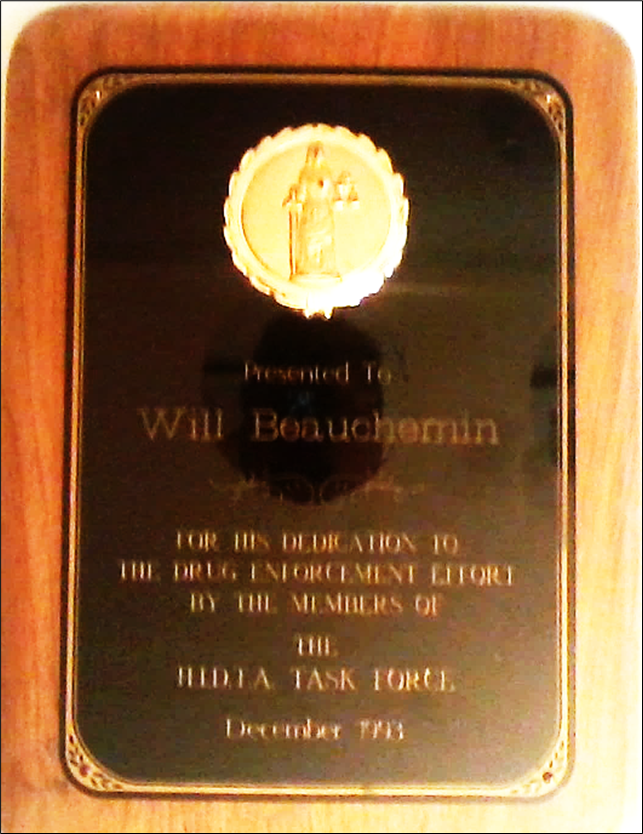
Presented to me by the Task Force Coordinator, DEA Assistant Special Agent‐in‐Charge James Harris, in December 1993. The text reads: “For his dedication to the drug enforcement effort by the members of the HIDTA Task Force December
1993.”
I describe the non-confidential aspects of my new intelligence processes and products in an article published in the professional journal Intelscope (Journal of the International Association of Law Enforcement Intelligence Analysts) in its March 1994 edition.
Certificate of Appreciation, US Customs Service (now Immigration & Customs Enforcement)
for INTELLIGENCE ANALYSIS
The new analytical techniques I developed for investigations of international drug-smuggling organizations reduced the time of a typical investigation by 25%.
This was the assessment of US Customs agent Richard J. Nocella, in charge of the US Customs group in the Northern New Jersey High Intensity Drug Trafficking Area (HIDTA) Task Force. My work for the Task Force included supporting investigations by the US Customs Service. A few months into my consulting work, Agent Nocella presented me with this certificate on behalf of the US Customs Service.
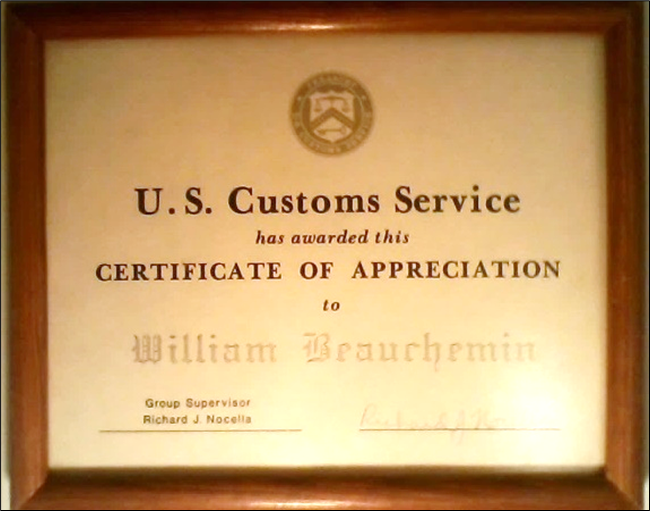
This undated certificate is signed by the Group Supervisor of the US Customs Group of the Northern New Jersey HIDTA Task Force, Richard J. Nocella. It was presented to me sometime in the summer of 1993.
Copyright Will Beauchemin 2024
